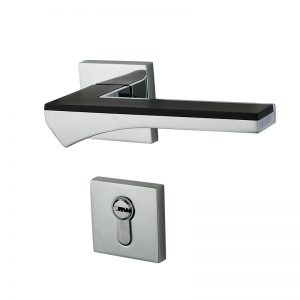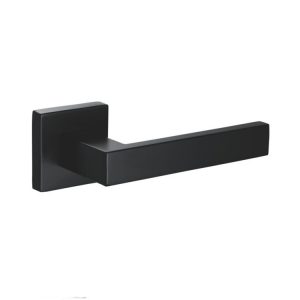1. Common faults and troubleshooting methods of bucket locks
1. Flexible when inserting the key but not flexible when pulling out. This kind of end is mostly driven by pin modification. The pin modification causes the axial gap of the lock cylinder to be too large. When pulling out, the round-end pin and the lock pin hole are misaligned, and they are reset when being inserted, so the insertion and removal is not flexible. The solution is to remove the lock, adjust the pin or padded to eliminate the gap.
2. When the drawer is open, the opening is flexible, and the opening resistance increases after the drawer is pushed in. This is a fault caused by the installation. When installing, the bolt groove of the upper beam of the draw bucket is chiseled too far inward, and the bolt scrapes the side of the bolt groove, which increases the opening resistance. Just repair the branch part of the bolt groove of the upper beam of the draw bucket.
3. Inflexible key insertion and removal after long-term use. You can add graphite pen powder or candles in the keyhole like a lock.
Two. Common faults and troubleshooting methods for falling locks
Drop locks are most commonly used in daily life. Because the parts are closed in the lock body, there is no need to install them during use, so failures are rarely revealed. Locks that have been used outdoors for a long period of time will reveal failures such as the lock core and lock beam not jumping.
1. The lock core does not turn
The failure of the lock core not to turn often reveals a drop lock that has been locked out of the door for a long time and is not often opened. The lock has been exposed to wind and rain for a long time, and the lock core and the lock body have been exposed to rust and accumulated dirt, making the lock core unable to rotate. Before troubleshooting, you should treat it seriously and check whether the key you hold is the key, and then remove the fault after confirming that there is no doubt.
The way to eliminate it is to click in a small amount of diesel or fuel, and after a while, insert the key and try to open it. If it cannot be opened, add some diesel or fuel. During the period of high bubble, use the key to gently turn it back and forth until all the actions are cut off. Avoid using too much force to break the key.
In addition, there is also a phenomenon that the lock core does not turn due to damage to the key tartar. At this time, you should carefully look for the damage to the tartar. If the damage is small, you can still unlock it after repair; if the damage is large, you should find another spare key to unlock.
2. The key is not flexible
The keys are not flexible when used for a long time. You can sprinkle some graphite pen noodles in the keyhole and switch it on and off several times. Really avoid adding engine oil to the keyhole, which will affect the movement of the marbles and reveal unexpected opening failures.
3. Lock the beam without jumping
The failure of the lock beam not to jump is mostly caused by the excessive tolerance of the shape and position of the lock beam. One side of the lock beam and the lock beam hole is exposed to squeeze phenomenon, coupled with rust and accumulated dirt, the lock beam cannot jump up.
Remedy: Insert the key into the lock cylinder, turn it to the open position, and use a small hammer to gently beat the lock body down or pull down the lock body forcefully. If the shock does not open, you can add a small amount of fuel or diesel to the lock beam, and then lightly beat it until the lock beam jumps out. After the lock beam jumps out, use a soft hammer to correct the lock beam, which can be used after repair.
4. The key breaks into the lock body
The key breaking into the lock body has a relatively large number of failures, and the troubleshooting method should be based on the breaking situation.
⑴ The key is broken into the lock body from the root, and a section is left on the chest of the lock. You can use small tweezers or needle-nose pliers to clamp it out.
⑵The key breaks into the lock core from its middle part, and it cannot be shaken out. The only thing in this situation is to disassemble the seven orifice seals on the lock body, shake the marble out, extract the lock core and the broken key together, and then reinstall the lock core, marbles, etc., and seal them with aluminum wire.
3. Common faults and troubleshooting methods of tongue marble door locks
1. After the door is locked, the key and the knob cannot be opened flexibly. The end result is that the installation between the lock box and the lock body is exposed to scrape or the door panel is deformed, which increases the friction resistance on a certain side of the lock box and the bolt. It can be solved by adjusting the position of the lock box.
2. Lack of “outside guarantee and inside” function. The fault is caused by the reverse installation of the key dial (the key dial should point to the lock tongue when it is installed). The elimination method is to reinstall.
3. Rotation of the lock core is not flexible. Because of the large temperature difference between the inside and outside of the door in the cold winter, the lock core showed signs of corrosion, which caused the lock core to rotate inflexibly. You can put candles or graphite pen powder on the key, insert it into the lock core and turn it around to increase the lubricating oil for the lock core and the lock body. Do not add oil to the key tartar or the lock cylinder to prevent it from affecting the elasticity of the bullet gun spring.








